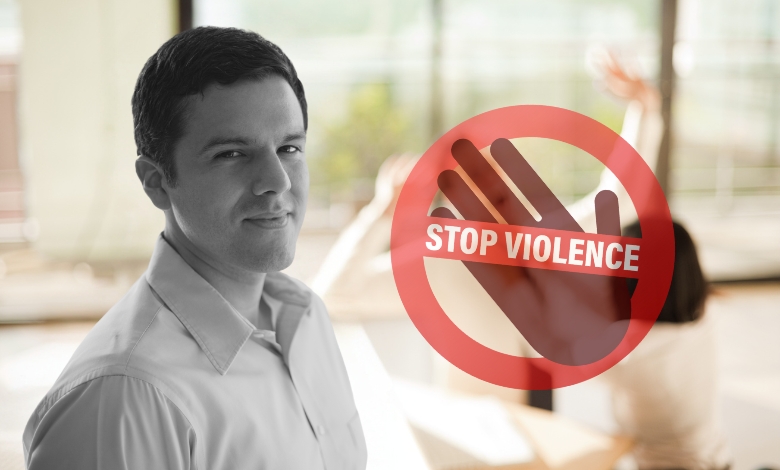Discover the causes, signs, and effective solutions to address violence in the workplace and ensure a safer environment for everyone.
Having worked in corporate settings for more than twenty years, I have witnessed the faint indicators and major effects of workplace violence.
One incident that comes to mind is a colleague who began displaying odd aggressiveness and annoyance directed against team members and projects.
At first, I considered it only a result of job tension.
But as the weeks passed, it became abundantly evident that this was more than just a ticking time bomb.
One afternoon, a little argument developed into a violent brawl and this bomb burst.
Intervention was eye-opening as well as frightening.
It motivated me to investigate the reasons and indicators of workplace violence, grasp how these events grow and spiral, and work out how to stop them.
This path has given me academic knowledge as well as useful tactics eager to be shared.
By means of my experiences and studies, I have discovered that early identification of symptoms and application of deliberate remedies can significantly impact—perhaps even saving lives and careers.
This dedication fuels my will to fight workplace violence and support better, more conscious organizational structures.
Let us delve in.
Article Breakdown
What Is Workplace Violence?

Any act or threat of physical violence, harassment, intimidation, or other disruptive behavior occurring on the workforce is considered workplace violence. Anyone can perpetrate it: staff, clients, consumers, or guests. Anyplace, from offices and retail stores to factories and building sites, workplace violence can occur.
Causes of Violence in the Workplace
I remember a time in a former job when two colleagues got into a furious dispute about project duties. High workloads and unclear management directions had been driving weeks of increasing anxiety. The dispute grew more intense one day and one of them shoved the other, starting a physical fight. For our management, it was a wake-up call to handle the fundamental problems causing friction and workplace stress.
The causes of workplace violence might be several, including:
Signs of Workplace Violence
In another work, I observed a typically calm and kind colleague growing more and more reclusive and agitated. Over small problems, he began to react sarcastically and snap at people. It came out he felt unsupported at work and was undergoing a trying divorce. Acknowledging these indicators, our staff contacted him and management set up counseling support to help reduce his stress and stop possible escalation.
Early recognition of the indicators of workplace violence can help to stop escalation. Important benchmarks include:
Clever Fixes for Workplace Violence
Following a troubling incident, we started a thorough violence prevention program in my present company. Along with better security measures including badge access and more lighting in parking areas, this program included frequent dispute resolution and stress management seminars. We also brought in a staff help program with private counseling available. We have seen a notable drop in confrontations and a generally better workplace since these improvements.
Dealing with workplace violence calls for a multifarious strategy. These are some good techniques:
1. Develop Explicit Guidelines
Any act or threat of physical violence, harassment, intimidation, or another disruptive conduct occurring at the workplace is known as workplace violence. Companies should have a clear violence in the workplace policy covering acceptable behavior, reporting protocols, and disciplinary actions for infractions.
2. Encourage a Friendly Workplace
A good and encouraging work culture will help to greatly lower stress and conflict. Promote honest communication, give chances for team building, and acknowledge staff successes.
3. Deliver Instruction
Frequent conflict resolution, stress management, and violence identification training helps staff members to properly manage challenging events.
4. Enhance Security Strategies
Improving physical security policies by means of surveillance cameras, regulated access points, and emergency response systems helps to discourage possible violence and guarantees a quick reaction should events take place.
5. Provide Supporting Services
Giving staff members access to mental health services and counseling will help them handle personal problems that might fuel workplace aggression. Additionally helpful are support groups and employee aid programs.
Frequently Asked Questions (FAQs)
1) What Is Lateral Violence in the Workplace?
Lateral aggression is hostile or aggressive behavior among peers at the same level within an organization. Usually resulting from rivalry, power battles, or unresolved problems, it can seriously lower morale and output.
2) What Group Is Susceptible to Violence in the Workplace?
Although workplace violence can afflict any employee, some groups are especially susceptible. This covers those in customer-facing positions, retail staff, and medical professionals. People working in demanding occupations or under bad supervision may also be more vulnerable.
3) How Can I Decrease Violence in the Workplace?
Reducing violence in the workplace calls for:
- Create and enforce unambiguous policies opposing violence.
- Encourage an open communication-based good work culture.
- Teach about conflict management and identifying violent behavior indicators.
- Enhance physical security protocols.
- Provide staff members experiencing either personal or professional stress support services.
4) How to Avoid Violence in the Workplace?
Stopping workplace violence calls for proactive actions including:
- Doing exhaustive background checks during employment.
- Encouragement of staff members to document questionable activity.
- Giving consistent instruction on how to prevent workplace violence.
- Managing is friendly and encouraging.
- Quickly and successfully addressing problems.
5) How to Deal with Lateral Violence in the Workplace?
Dealing with lateral violence calls for support, policy enforcement, and training combined:
- Enforce a zero-tolerance bullying and harassment policy.
- Promote honest communication and create a safe environment where staff members could express worries.
- Provide mediation services and conflict resolving courses.
- Counsel victims and provide additional resources.
Wrapping Up
Workplace violence is a major problem with negative consequences for companies and staff. We can establish safe and effective workplace by identifying warning indicators, putting preventative actions into place, and offering support services. Leaders must aggressively solve this problem and give our teams’ welfare first priority. Be alert, have good communication skills, and respond when needed—these little actions will help to greatly reduce workplace violence.



